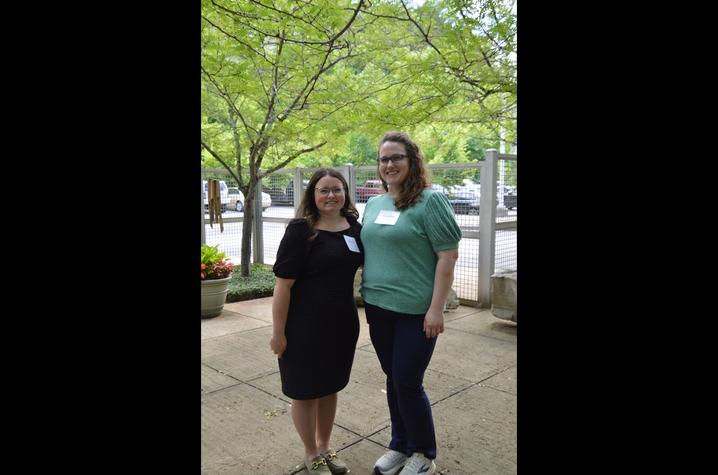Youth suicide prevention starts with awareness
The University of Kentucky Public Relations and Strategic Communications Office provides a weekly health column available for use and reprint by news media. This week’s column is by Jacqueline Seals, the principal investigator for the Advancing Violence Epidemiology in Real Time (KYAVERT), and Catherine Hines, research project manager, from the Kentucky Injury Prevention and Research Center, which is based at the University of Kentucky College of Public Health.
LEXINGTON, Ky. (Oct. 6, 2025) — According to the Kentucky Injury Prevention and Research Center, suicide numbers among children ages 6-17 have increased since 2020. Among young adults (ages 18-24), those numbers rose until 2023 but have shown a decline in 2024. As the school year begins each year, suicide risk among youth and young adults tends to rise.
For youth and young adults still in school, unique stressors within the academic environment can contribute to increased mental health challenges and heightened suicide risk. Some of those stressors include, but are not limited to:
- Being a victim of bullying,
- Having a history of depression and other mental illness,
- Being exposed to violence or suicide,
- Being a victim of physical, emotional, or sexual abuse, and
- Having access to lethal means.
Suicide prevention is possible — and it starts with awareness and action.
A number of factors at the individual, friends/family, community and societal levels protect people from suicide. At the individual level, some of the factors that protect a person against suicide risk include:
- Having personal reasons to live and setting future goals.
- Knowing who to contact in a crisis.
- Seeking help when facing emotional or psychological challenges.
The family of a young person at risk for suicide can reduce that risk by:
- Promoting supportive environments and strong social connections.
- Teaching coping and problem-solving skills to manage stress.
- Reducing or eliminating access to lethal means.
- Recognizing warning signs and seeking help when someone may be at risk.
Warning signs of suicide ideation to watch for include:
- Obsession with death or dying, including talking about or planning suicide.
- Loss of interest in previously enjoyed activities or disengagement from school.
- Neglect of personal appearance or health.
- New or increased use of alcohol or drugs, or engaging in reckless behavior.
Resources for youth mental health
If you or someone you know is experiencing a mental health crisis and is ready to seek help, the following resources are available:
- Call 988 or chat with a counselor at https://chat.988lifeline.org/
- FindMentalHealthNowKY.org is a search tool that can help you find mental health treatment facilities in Kentucky with available openings. Use the “age” filter for facilities that work directly with youth. You can also find educational and community resources on this website.
- Mental Health America of Kentucky — Mental Health Screening. Everyone experiences times of anxiety, stress and sadness. Knowing when it’s time to seek professional mental health assistance is important. https://screening.mhanational.org/screening-tools/?ref=MHAKY
The Kentucky Injury Prevention and Research Center is a unique partnership between the Kentucky Department for Public Health (DPH) and the University of Kentucky College of Public Health that serves both as an academic research center and as the bona fide agent for statewide injury prevention and control. For more information, visit https://kiprc.uky.edu/.
As the state’s flagship, land-grant institution, the University of Kentucky exists to advance the Commonwealth. We do that by preparing the next generation of leaders — placing students at the heart of everything we do — and transforming the lives of Kentuckians through education, research and creative work, service and health care. We pride ourselves on being a catalyst for breakthroughs and a force for healing, a place where ingenuity unfolds. It's all made possible by our people — visionaries, disruptors and pioneers — who make up 200 academic programs, a $476.5 million research and development enterprise and a world-class medical center, all on one campus.






